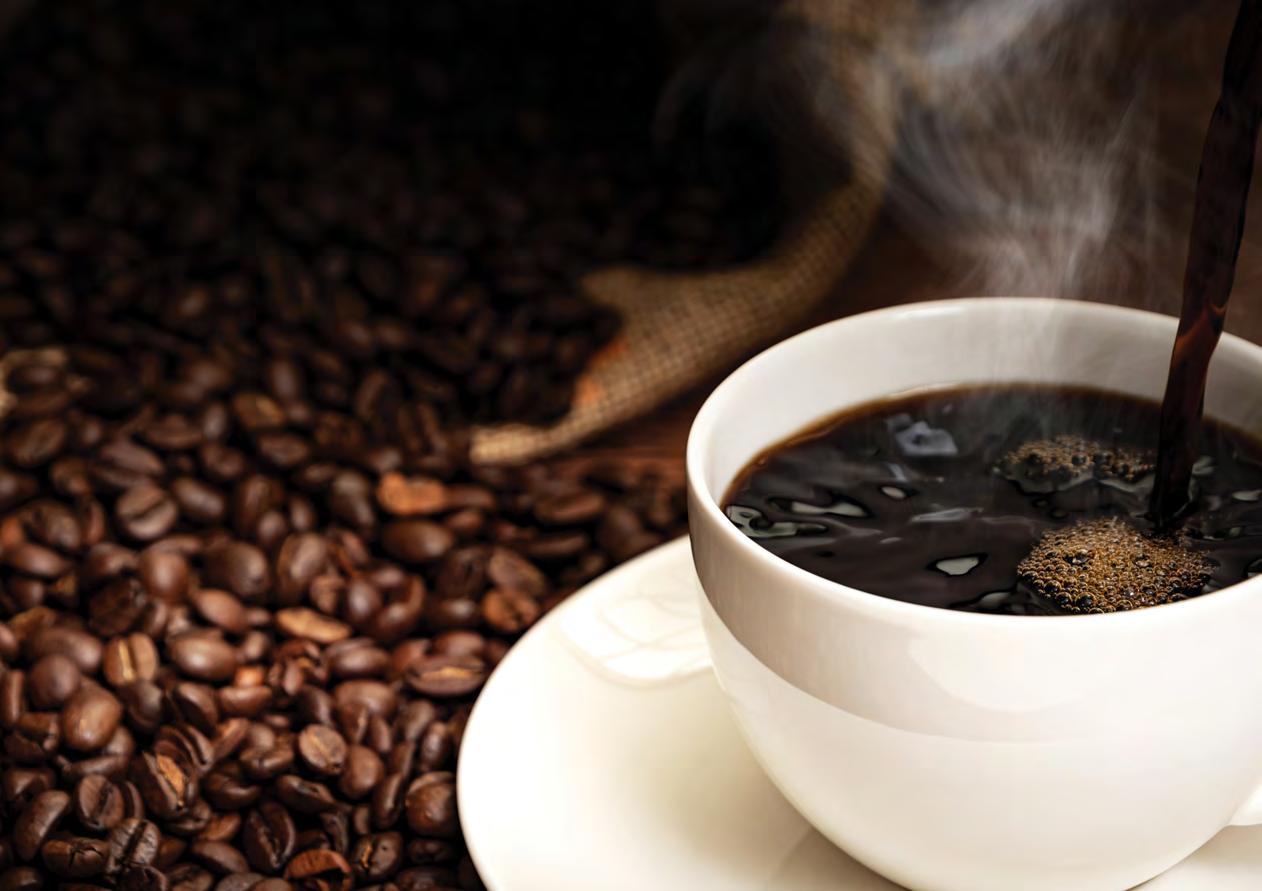
2 minute read
THIRD WAVE: The humble art & science of coffee
written by V. CRAIG CAMPBELL JR.
SMALL-BATCH CRAFT COFFEE ROASTER, RIVER BOTTOM ROASTERS
Advertisement
Many years ago, I had an experience that rocked me to my core. It wasn’t a revelation, an epiphany or out-of-body experience, and I didn’t get abducted by aliens (which I think would be pretty cool).
It was a simple, freshly roasted, cup of black coffee. It was smooth, balanced and finished with a lingering milk chocolate flavor and hint of brown sugar. Yet, nothing was added to it. And so, my coffee journey began.
Immediately preceding that experience, I had the impression that coffee was always bitter and needed French vanilla creamer and sugar. I mean, wasn’t all coffee already ground, in a can, from a guy named Juan Valdez in Colombia?
But that day, I met a coffee roaster who introduced me to third-wave coffee. He poured me a cup and enlightened me on the nuances.
The coffee community has categorized the evolution of coffee from first to third waves. In a nutshell, the bitter canned coffee from Juan Valdez is the first wave. Starbucks is the second wave, with its flavored syrups and emergence of slightly less bitter roasting techniques. The third wave is an awakening of small craft/specialty micro coffee roasters that highlight the natural nuances a coffee bean has to offer.
The third wave also enhanced brewing techniques to maximize the extraction of those natural flavor nuances: strict measurements of coffee grounds to water; water temperature; water quality; and grind size.
There is discussion of a fourth wave that would incorporate environmental consciousness and ethical sourcing of coffee from impoverished and war-torn areas of the world. The coffee selections at my roastery always involve ethical and environmental considerations.
The evolution of coffee brings a welcome challenge to me as the roaster. How can I develop a roast profile for a specific coffee bean that accurately portrays the flavor nuances the bean has to offer? A coffee bean is just a coffee bean, right?
There are many varietals of coffee, and I can’t roast a coffee from Ethiopia the same way I roast a coffee from Indonesia or Guatemala. Not only does the origin and type of coffee change; there are variations in the way coffee is harvested and fermented. All these factors bring multiple elements into my attempt to accurately represent the available nuances.
I have a coffee from Ethiopia that captures the essence of blueberries and strawberries. My Indonesian coffee brings a rich, decadent, sweet earthiness. Our friends in El Salvador send me coffee from their farm that hints of peanut butter with a dash of grape jelly. Then there’s the one that started it all, a balanced cup of coffee from Guatemala that exhibits a wonderful finish of milk chocolate and hint of brown sugar.
Take a coffee journey with us. Book a tasting in our roastery by going to riverbottomroasters.com/collections/ coffee-selection/products/tasting-experience.
Better Beans, Better World!

V. CRAIG CAMPBELL JR.
SMALL-BATCH CRAFT COFFEE ROASTER, RIVER BOTTOM ROASTERS










